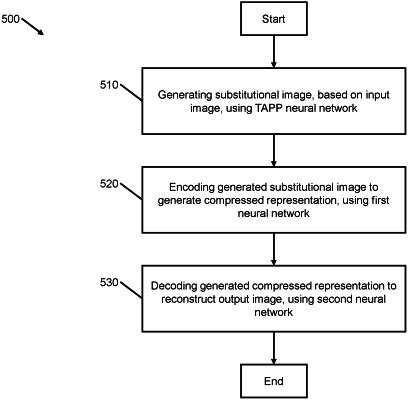| CPC H04N 19/42 (2014.11) [G06F 18/214 (2023.01); G06V 10/82 (2022.01); H04N 19/147 (2014.11)] | 20 Claims |

|
1. A method of task-adaptive pre-processing (TAPP) for neural image compression, the method being performed by at least one processor, and the method comprising:
generating a substitutional image, based on an input image, using a TAPP neural network; and
encoding the generated substitutional image to generate a compressed representation, using a first neural network,
wherein the TAPP neural network is trained by:
generating a substitutional training image, based on an input training image, using the TAPP neural network;
encoding the generated substitutional training image to generate a compressed training representation, using the first neural network;
decoding the generated compressed training representation to reconstruct an output training image, using a second neural network;
generating gradients of a rate-distortion (R-D) loss that is generated based on the input training image, the reconstructed output training image and the generated compressed training representation; and
updating the generated substitutional training image, based on the generated gradients of the R-D loss.
|